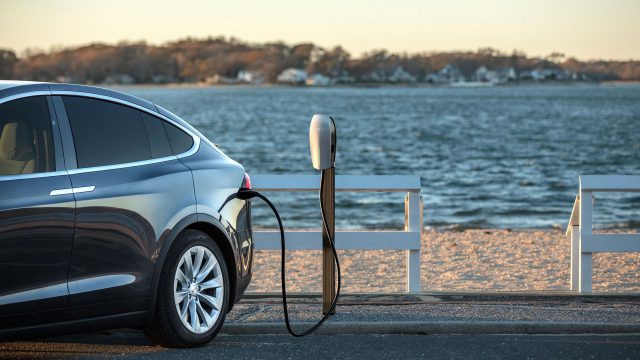
Photo Credit: Inside EVs
A quick Google search on the “electric cars and the electric grid” will drown you in opinions on how many electric cars is too many, or not enough, in this great state of California. The electric car demand is not going anywhere any time soon, so it’s important we ask the questions now. There are many myths that too many electric cars will cause the current electric grid to crash. Worse case scenarios have the grid completely melting, never to exist in the same form again. This article is designed to highlight some important facts about electric cars and their impact on the California utility grid.
Current Electric Car Demands
Experts agree the impacts electric vehicles have on the grid today are minimal. Even in states, such as California, where there is a higher saturation of battery-electric and plug-in electric hybrid markets, the current impact on the grid is not concerning. Research by the National Renewable Energy Lab suggests that the current grid could withstand 25% of the cars on the road being plug-in electric cars without negative impact.
Planning for the Future

Photo Credit: Marriott on the Falls
It is expected the number of electric vehicles in the U.S. will reach 3.8 million by 2020. This means that now is the time for the utility companies to start to work on how to manage necessary changes in infrastructure. As EV (electric vehicles) continue to drop in price and become more affordable, utilities will need to prepare to accommodate an increase. Most experts agree that by 2035 levels of energy uptake due to EV car charging will need to be mitigated.
Electric Car Demand: Benefits of EV Charging to Utilities
What is often overlooked by many people concerned about the impact of electric cars on the grid is there are often benefits of EV charging for utilities. Many utilities in the U.S. offer rebates to their users who install charging stations in their home if the homeowner makes a pledge to charge during non-peak hours. An increase in nocturnal use decreases the fluctuation of energy demands put on the utilities. The decrease in variation makes generation of electricity less expensive.
Additionally, EV’s are considered batteries on wheels. Drivers with access to daytime plugs powered by solar energy could fill up on energy when the sun is shining and discharge that power back into the grid when demand peaks. This earns the driver a bit of a rebate.
Solar Power and Your Electric Vehicle

Photo Credit: Car Maxx
Solar power is another source that many EV car owners are turning to. Although solar does not mean there is no impact on the electrical grid, solar panels do facilitate less expensive charging of an electric vehicle. EV are also recognized as being an effective way to store energy produced by solar panels. Additionally, your electric vehicles allows driver’s to further commit to dependence on clean, renewable energy sources.
No Immediate Threat
The moral of the story, to date, there is not catastrophic threat to the U.S. electrical grid due to electric vehicles. Experts confirm that utilities do need to start thinking proactively about how an increase in demand will occur and that if they start now, there is more than enough time to mitigate the problem.
WE also are confident that the usage of an electric vehicle partnered with your solar system and EV charged will allow you to defray some of the costs and concerns of being dependent on the grid alone.
If you are considering purchasing an electric vehicle or would like to learn more about installing a charging station with your solar installation, please reach out to one of our knowledgeable Energy Adviser’s today.


Leave a Reply